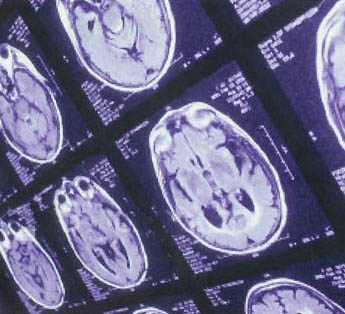Symptoms and Diagnosis of Acromegaly
What are the symptoms of acromegaly?
The name acromegaly comes from the Greek words for “extremities” and “enlargement,” reflecting one of its most common symptoms - the abnormal growth of the hands and feet. Swelling of the hands and feet is often an early feature, with patients noticing a change in ring or shoe size, particularly shoe width. Gradually, bone changes alter the patient’s facial features: The brow and lower jaw protrude, the nasal bone enlarges, and the teeth space out.
Overgrowth of bone and cartilage often leads to arthritis. When tissue thickens, it may trap nerves, causing carpal tunnel syndrome, which results in numbness and weakness of the hands. Body organs, including the heart, may enlarge.
1. Signs and symptoms linked to GH/IGF-1 excess:
- Changes in Facial features
- Soft tissue swelling
- Deepening of the voice
- Tongue thickness
- Snoring
- Enlargement of Feet and hands
- Protrusion of the jaw
- Teeth gap
- Excessive sweating
- Thickening and oily skin
- Acne and skin tags
- Joint pain/arthritis
- Carpal Tunnel Syndrome
- Enlarged organs: thyroid, liver, spleen, heart, …
2. Signs and symptoms linked to mass effects of the adenoma:
- Headaches
- Visual disturbances
- Cranial nerve palsies (Facial pain, eyelid drooping and double vision)
- Hypopituitarism with menstrual disorders, decreased libido, infertility, erectile dysfunction, hypothyroidism, fatigue, muscle weakness
3. Signs and symptoms linked to prolactin co-secretion:
- Menstrual disorders
- Decreased libido
- Infertility
- Erectile dysfunction
- Galactorrhea (milk production)
- Gynecomastia (breast enlargement)
4. Complications:
- Diabetes
- Heart disease
- Hypertension
- Sleep apnea (when you temporarily stop breathing while you are asleep)
- Nasal polyps
- Colon polyps
- Mood swings
How is acromegaly diagnosed?
The delay in diagnosis is about 10 years because physical changes linked to acromegaly develop slowly and insidiously. The varied symptoms of acromegaly can make diagnosis challenging. Many of the initial signs of the disease can be attributed to other conditions. This is why the delay in diagnosis can be long. Patients often first seek medical advice for orthopedic or rheumatologic symptoms, cardiac events, or even dental disorders. Often, acromegaly is suspected when a patient sees a new physician for the first time and he\she is struck by the patient’s current characteristic facial appearance. Comparing old photographs from a number of different time periods will often increase suspicion of the disease.
When acromegaly is suspected, you have to be referred to an endocrinologist (a specialist in hormone related conditions). A detailed physical examination will be done to look for signs and symptoms. To make the diagnosis, important screening tests will be ordered. They will include blood work, as well as an oral glucose tolerance test (OGTT) to confirm GH hypersecretion, a pituitary magnetic resonance imaging (MRI) to visualize the tumor and visual field examination to identify pressure on the optic nerves.
Blood Tests
If acromegaly is suspected, a doctor must measure the GH level in a person’s blood to determine if it is elevated. However, a single measurement of an elevated blood GH level is not enough to diagnose acromegaly: Because GH is secreted by the pituitary in impulses, or spurts, its concentration in the blood can vary widely from minute to minute. At a given moment, a person with acromegaly may have a normal GH level, whereas a GH level in a healthy person may even be five times higher.
More accurate information is obtained when GH is measured under conditions that normally suppress GH secretion. Health care professionals often use the oral glucose tolerance test to diagnose acromegaly because drinking 75 to 100 grams of glucose solution lowers blood GH levels to less than 1 nanogram per milliliter (ng/ml) in healthy people. In people with GH overproduction, this suppression does not occur. The oral glucose tolerance test is a highly reliable method for confirming a diagnosis of acromegaly.
Physicians also can measure IGF-I levels, which increase as GH levels go up, in people with suspected acromegaly. Because IGF-I levels are much more stable than GH levels over the course of the day, they are often a more practical and reliable screening measure. Elevated IGF-I levels almost always indicate acromegaly. However, a pregnant woman’s IGF-I levels are two to three times higher than normal. In addition, physicians must be aware that IGF-I levels decline with age and may also be abnormally low in people with poorly controlled diabetes or liver or kidney disease.
Blood Work for the GH overproduction:
GH and IGF-1
Blood will be drawn and tested for random plasma levels of GH and IGF-1.
Oral Glucose Tolerance Test (OGTT)
OGTT is the most important test to diagnose acromegaly. You must fast overnight. In the morning, you will be given an orange sugar solution to drink. Your plasma GH levels will then be measured every half hour for 2-3 hours. The sugar solution should decrease plasma GH levels if you do not have acromegaly Plasma IGF-l levels above the normal sex and age-adjusted range and plasma GH levels greater than a determined cut-off under OGTT conhrm the diagnosis of acromegaly
Imaging
After acromegaly has been diagnosed by measuring GH or IGF-I levels, a magnetic resonance imaging (MRI) scan of the pituitary is used to locate and detect the size of the tumor causing GH overproduction. MRI is the most sensitive imaging technique, but computerized tomography (CT) scans can be used if the patient should not have MRI. For example, people who have pacemakers or other types of implants containing metal should not have an MRI scan because MRI machines contain powerful magnets.
If a head scan fails to detect a pituitary tumor, the physician should look for non-pituitary “ectopic” tumors in the chest, abdomen, or pelvis as the cause of excess GH. The presence of such tumors usually can be diagnosed by measuring GHRH in the blood and by a CT scan of possible tumor sites.
Rarely, a pituitary tumor secreting GH may be too tiny to detect even with a sensitive MRI scan.
Pituitary MRI
MRI gives a three-dimensional detailed computer image of the pituitary. This is needed by the surgeon in order to see the size, the location of the tumor and if there is invasion of the surrounding structures. This test can take up to 60 minutes and no preparation is needed. In cases of MRI contraindications, such as pacemaker, metallic implants, it could be replaced by a pituitary computed tomography or CT scan but it is less precise than an MRI to see pituitary tumors.
Pituitary MRI should be done on screening, sometimes during the surgery post-operatively and yearly for ongoing monitoring.
Visual Fields
The visual field test is performed to see whether the tumor has compressed the optic nerves that are located close to the pituitary gland. This test takes approximately 5045 minutes and no preparation is needed.
This should be done on screening, post-operatively and on the recommendations of your endocrinologist. If at any time you are noticing visual changes, please inform your endocrinologist as visual field testing may need to be performed as soon as possible. This could be an indication that some residual tumor may have grown.
Additional Tests
When the diagnosis is confirmed, the following tests are also important to determine complications of acromegaly.
Metabolic and hormonal blood work
Such as glucose, electrolytes, lipids .... and other hormones such as TSH, T4, prolactine or PRL, cortisol, LH, FSH, testosterone. You must fast overnight and should have your blood drawn the next morning between 8-9 am at your nearest lab.
Electrocardjogram and Echocardiogram
These procedures evaluate heart function. An echocardiogram can take approximately 60-90 minutes. No preparation for this test is needed.
Ultrasound of the gall bladder
This procedure is used to determine if gallstones or polyps (harmless tumor) are present in the gallbladder before the medical treatment of acromegaly. It can take approximately 1 hour. There is a preparation required for this test.*
Colonoscophy
Colonoscophy is necessary to evaluate if polyps (benign tumoor) have developed into the large intestine. If so, they should be removed during the same exam because they may eventually become cancerous. This test can take approximately 1-2 hours. There is a preparation required for this test *
Polysomnography (sleep study)
A polysomnography is used to check if you have sleep apnea. A polysomnography is often ordered for patients with complaints of daytime fatigue or sleepiness that may be caused by interrupted sleep. It is usually performed at night, at the hospital or at home.
Bone Mineral Density (BMD)
Bone mineral densitometry is an enhanced x-ray that measures bone loss. A BMD test can tell whether or not you have osteoporosis and how likely you are to develop it in the future. Osteoporosis puts you at risk for fracture. This test can take approximately 20-30 minutes. There is no preparation required for this test.
*When preparation is required for a test, information will be given to you when you are given the date and time of the appointment.